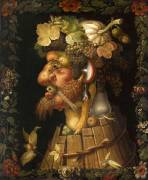Shop art print and framed art The Mona Lisa by Leonardo da Vinci
The Mona Lisa is also available as...
MuralCustomise
Your art print
The Mona Lisa OF Leonardo da Vinci
-20%The Mona Lisa is also available as...
MuralThe Mona Lisa
The whole world knows "The Mona Lisa", the mysterious painting that has fascinated and intrigued for centuries. But behind this work lies an artist, Leonardo da Vinci, and his presumed model, Mona Lisa. Let's discover together the captivating story and hidden secrets of this extraordinary portrait.
Leonardo da Vinci: a renowned artist
An emblematic figure of the Italian Renaissance, Leonardo da Vinci is considered one of the greatest artists and thinkers of all time. Painter, sculptor, architect, engineer... His talent and curiosity knew no bounds. His many works include The Last Supper, The Virgin of the Rocks and La Belle Ferronnière. However, it is the Mona Lisa that remains his most famous masterpiece today.
The creation of the portrait of Mona Lisa
A special commission
It is generally accepted that Mona Lisa was commissioned around 1503 by Francesco del Giocondo, a wealthy Florentine merchant. He is said to have asked Leonardo da Vinci to paint the portrait of his wife, Lisa Gherardini, also known as the Mona Lisa. The painting was therefore intended to be a simple family portrait, but it ultimately exceeded all expectations to become a mythical work.
Years of work
Leonardo da Vinci worked on the portrait of Mona Lisa for several years, regularly making changes and improvements to his painting. Some sources estimate that he even continued to refine his masterpiece until his death in 1519. This long period of creation goes some way to explaining the fascination that this work holds for the public: every detail seems to have been carefully thought out by the artist.
The Secrets of the Mona Lisa
The enigmatic smile
The smile of Mona Lisa is undoubtedly the most famous and mysterious element of the painting. It has given rise to many interpretations and speculations. Some see it as a mocking smile, others read into it a hidden melancholy. Whatever the case, this smile seems to change depending on the angle of view and the lighting, creating an impression of movement and life.
The eyes that follow with the gaze
Another disturbing feature is that Mona Lisa's eyes seem to follow the viewer wherever they are in the room. This phenomenon, known as the "floating gaze effect", is due to the technique used by Leonardo da Vinci to paint his model's eyes. By playing with shadows and contrasts, he succeeded in creating an optical illusion that gives the impression that Mona Lisa is always watching the person contemplating her.
The sfumato technique
Leonardo da Vinci was a master of the art of sfumato, a pictorial technique that involves blurring outlines and details to create a steamy, mysterious atmosphere. This method, particularly evident in The Mona Lisa, helps to soften contrasts and give the painting depth and a unique atmosphere.
The turbulent history of Mona Lisa
After Leonardo da Vinci's death, the Mona Lisa had a turbulent journey. The painting passed through various hands before arriving in France in the early 16th century. It was then acquired by Francis I, King of France, who kept it in his royal collections.
Over the centuries, the portrait of Mona Lisa was exhibited in various French châteaux (Amboise, Fontainebleau, Versailles), before finding its definitive home in the Louvre Museum in Paris at the end of the 18th century. Today, it is considered one of France's national treasures and attracts millions of visitors every year.
The spectacular theft in 1911
The Mona Lisa is also famous for having been the victim of one of the most daring thefts in the history of art. In August 1911, an Italian labourer by the name of Vincenzo Peruggia managed to steal the painting from the middle of the Louvre museum. He managed to keep the Mona Lisa for two years before finally being arrested and convicted of theft. Since this episode, the painting has been protected by armoured glass and highly elaborate security systems.
The posterity of the Mona Lisa
Thanks to its beauty, mystery and exceptional history, the Mona Lisa has become a true symbol of art and culture. It still inspires many artists, writers and film-makers today, who seek to understand and reproduce the magic of this unique portrait.
A universal symbol, the Mona Lisa continues to intrigue and fascinate generations around the world. Her popularity does not seem to wane with time, quite the contrary: she remains an inexhaustible source of inspiration and admiration for all those interested in art and history.
This artwork is a painting from the renaissance period. It belongs to the italian renaissance style.
« The Mona Lisa » is kept at Louvre, Paris, France.
Find the full description of The Mona Lisa by Leonardo da Vinci on Wikipedia.



































